Submitted:
27 June 2023
Posted:
29 June 2023
You are already at the latest version
Abstract
Keywords:
1. Introduction
2. Inertial Sensor of Taiji-1
2.1. Taiji-1 satellite
2.2. Inertial sensor
3. Principle of IS calibration
3.1. principle of scale factors and COM offset calibrations
3.2. principle of IS bias calibration
4. Calibration results
4.1. Swing maneuver and data preprocessing
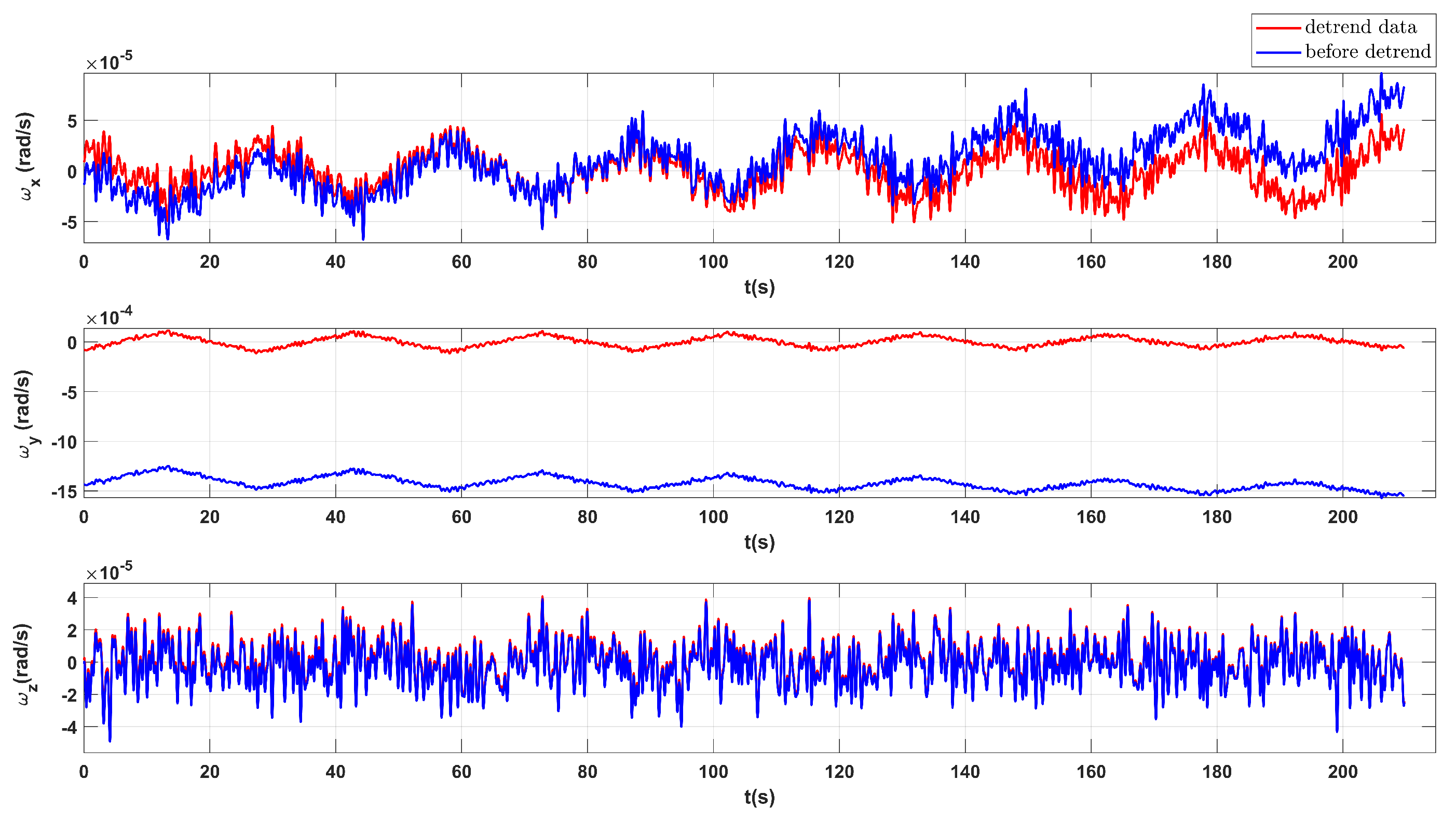
4.2. Results of scale factor calibrations
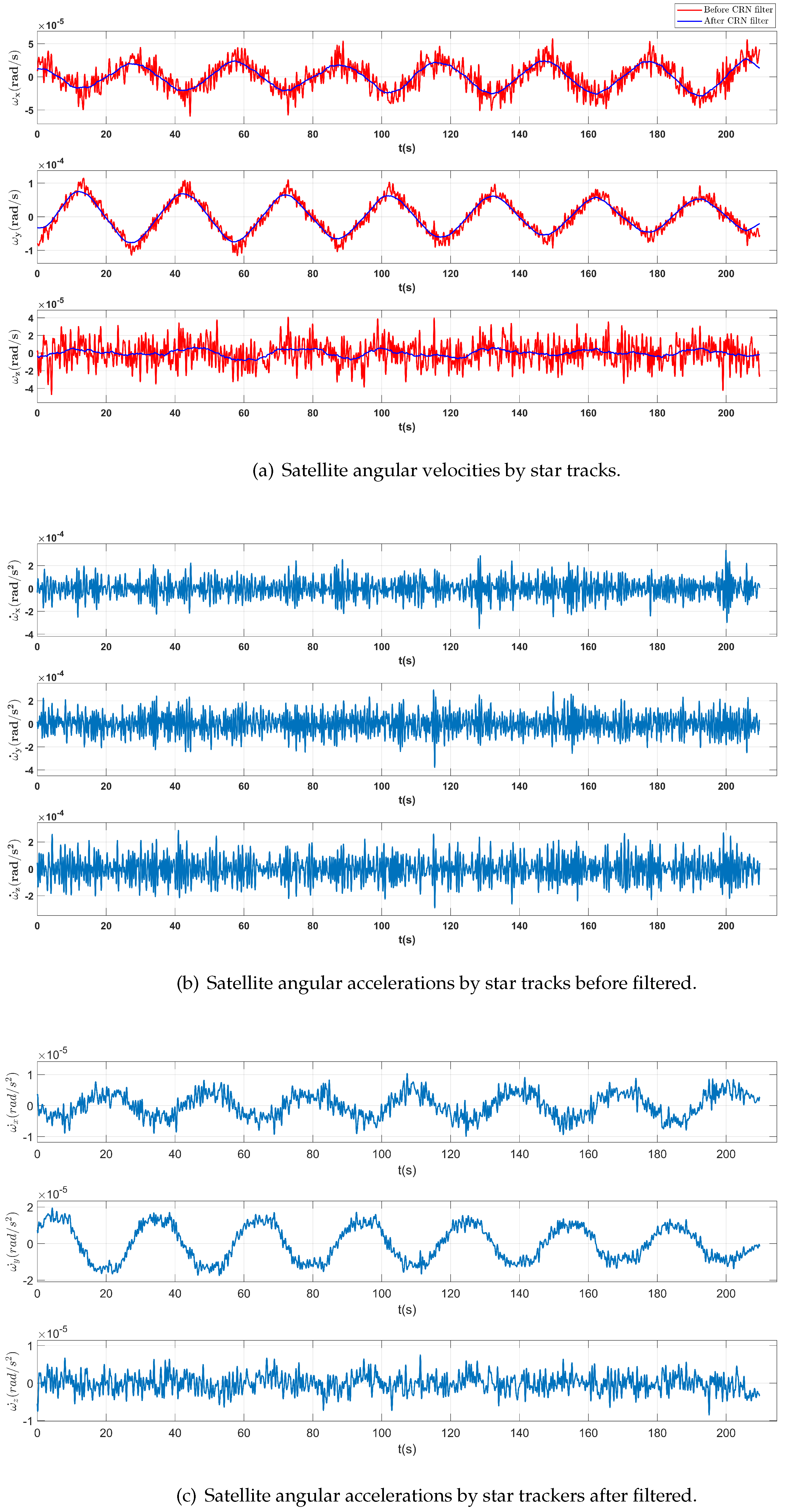
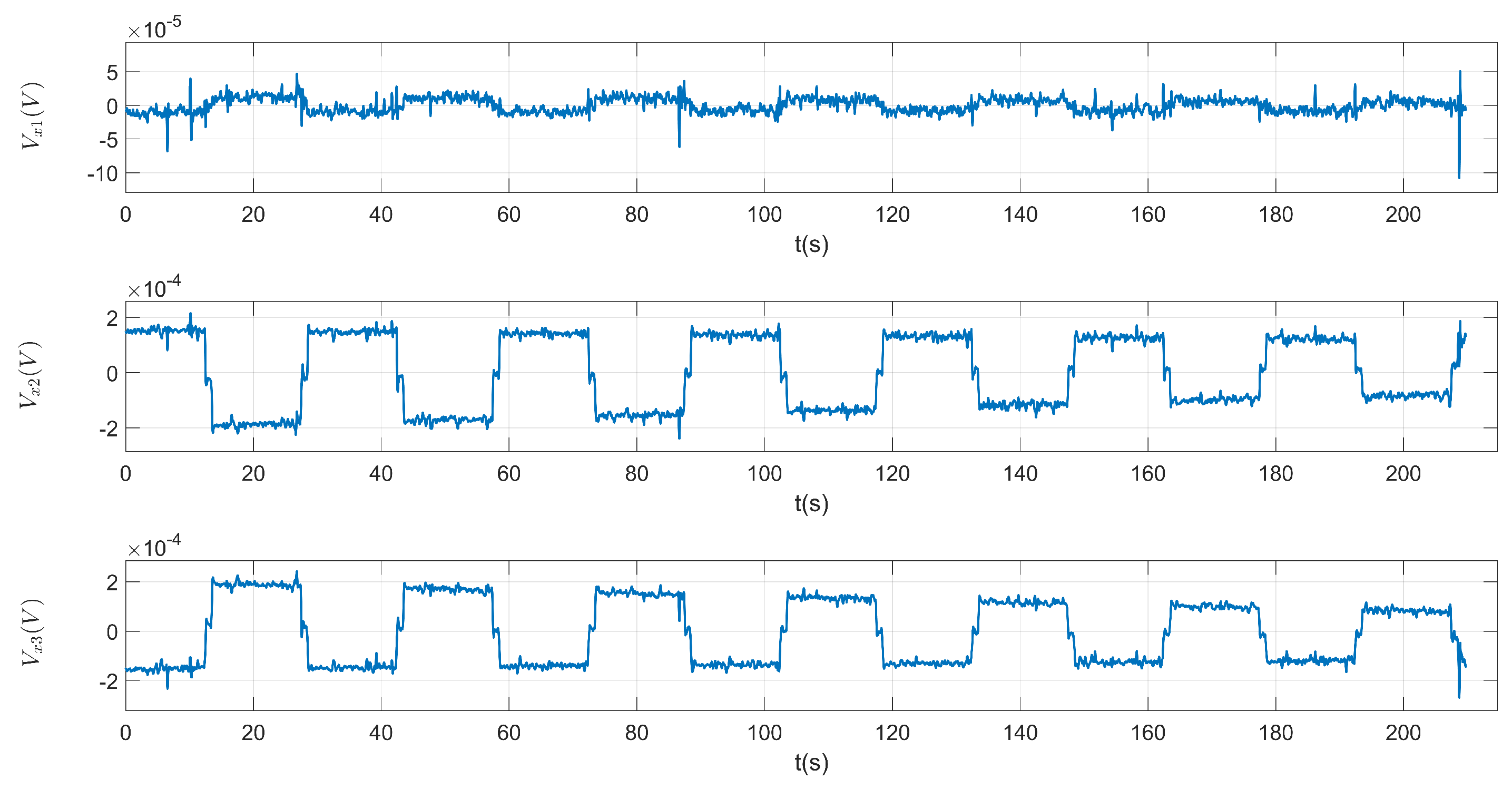
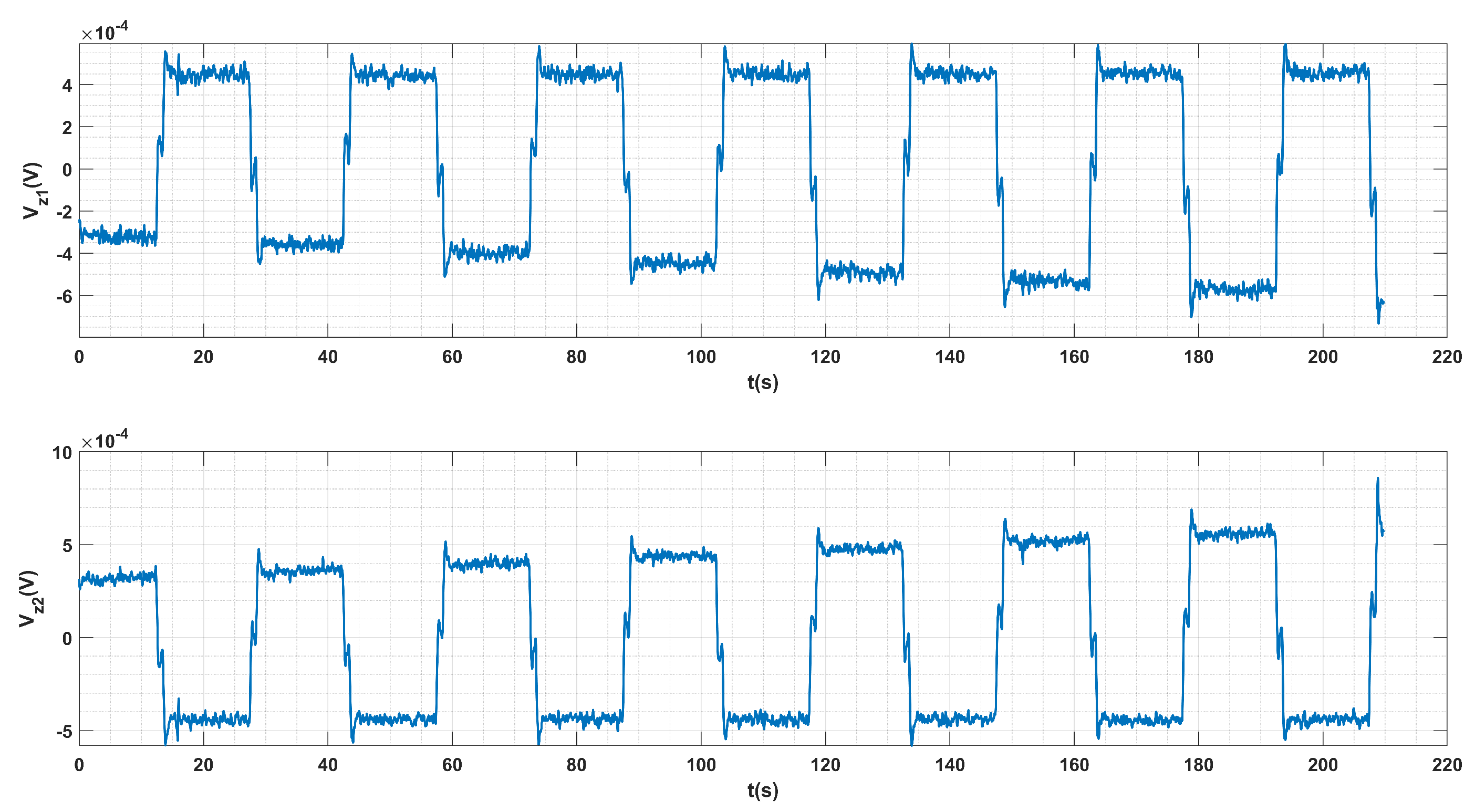
4.3. Results of COM calibration
4.4. Results of bias calibration
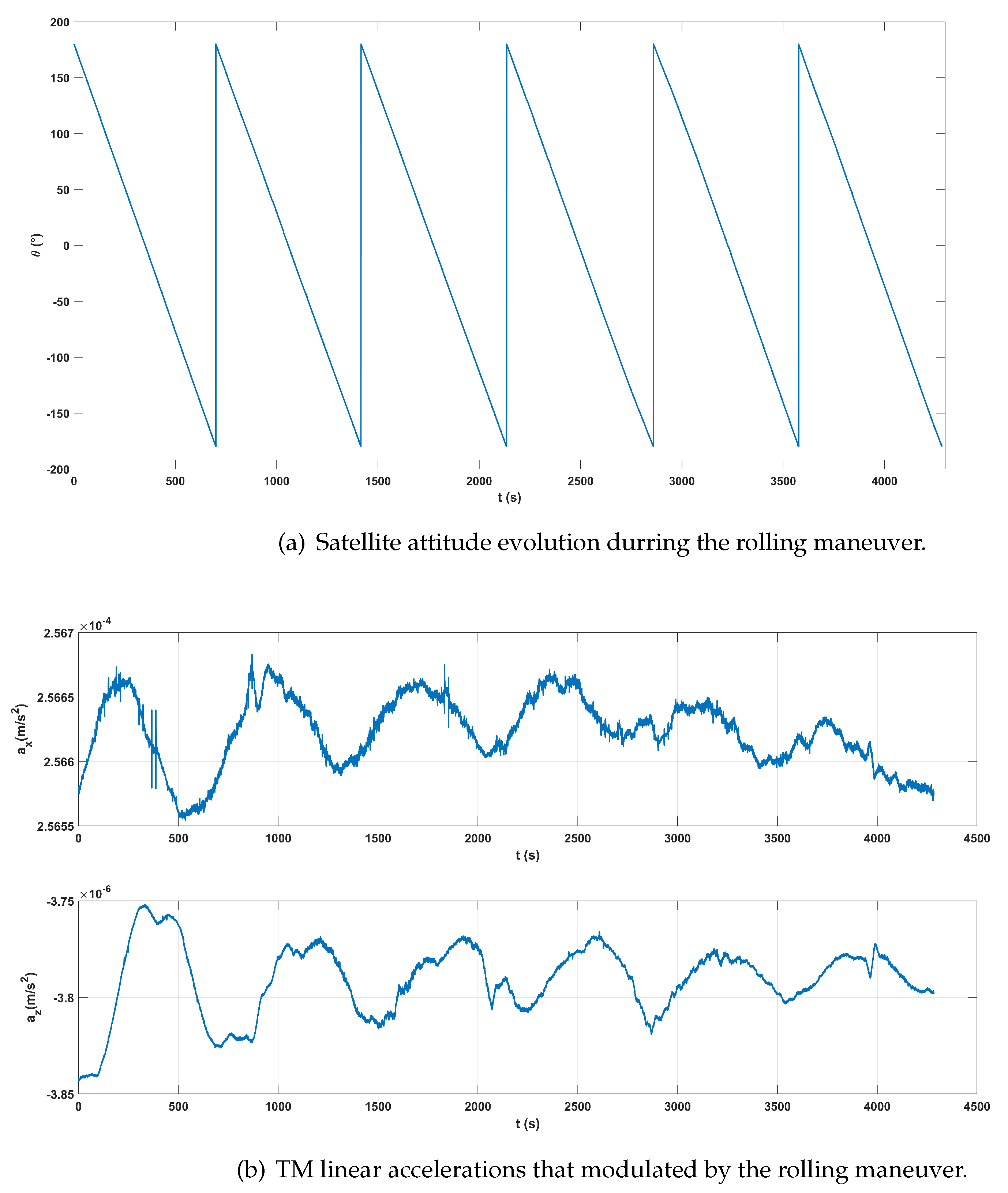
4.5. IS performance evaluation
5. Conclusion
Author Contributions
Acknowledgments
Conflicts of Interest
References
- Reigber, C.; Lühr, H.; Schwintzer, P. CHAMP mission status. Advances in space research 2002, 30, 129–134. [Google Scholar] [CrossRef]
- Davis, E.; Dunn, C.; Stanton, R.; Thomas, J. The GRACE mission: meeting the technical challenges 1999.
- Tapley, B.D.; Bettadpur, S.; Ries, J.C.; Thompson, P.F.; Watkins, M.M. GRACE measurements of mass variability in the Earth system. Science 2004, 305, 503–505. [Google Scholar] [CrossRef]
- Flechtner, F.; Schmidt, R.; Meyer, U.; Neumayer, K.H.; Dahle, C.; Dobslaw, H.; Fagiolini, E.; Gruber, C.; König, R.; Michalak, G. The GFZ GRACE follow-on mission. In Proceedings of the Earth gravity field from space—from sensors to Earth sciences. Springer; 2014; pp. 131–146. [Google Scholar]
- Dahle, C.; Flechtner, F.; Gruber, C.; König, R.; Michalak, G.; Neumayer, K.H. The Gravity Recovery and Climate Experiment Follow-On (GRACE-FO) mission. Surveys in Geophysics 2019, 40, 1481–1506. [Google Scholar]
- Drinkwater, M.R.; Floberghagen, R.; Haagmans, R.; Muzi, D.; Popescu, A.; Van den Ijssel, J. GOCE: ESA’s first Earth Explorer Core Mission. Acta Astronautica 2003, 53, 217–232. [Google Scholar]
- Wu, Y.L.; Luo, Z.R.; Wang, J.Y.; et al. China’s first step towards probing the expanding universe and the nature of gravity using a space borne gravitational wave antenna. Communications Physics 2021, 4, 34. [Google Scholar]
- Wu, L.M.; Xu, P.; Zhao, S.H.; Qiang, L.E.; Luo, Z.R.; Wu, Y.L. Global Gravity Field Model from Taiji-1 Observations. Microgravity Science and Technology 2022, 34, 77. [Google Scholar] [CrossRef]
- McNamara, P.; Vitale, S.; Danzmann, K. LISA Pathfinder: mission summary and early results. Classical and Quantum Gravity 2019, 36, 080301. [Google Scholar]
- Amaro-Seoane, P.; Audley, H.; Babak, S.; Binetruy, P.; Berti, E.; Bohé, A.; Caprini, C.; Colpi, M.; Cornish, N.; Danzmann, K.; et al. Laser Interferometer Space Antenna (LISA) for Gravitational Wave Astronomy: A joint mission between ESA and NASA. Classical and Quantum Gravity 2017, 34, 044001. [Google Scholar]
- Hu, W.R.; Wu, Y.L. Taiji program in space for gravitational wave physics and nature of gravity. National Science Review 2017. [Google Scholar] [CrossRef]
- Luo, J.; Chen, L.S.; Duan, H.Z.; et al. TianQin: a space-borne gravitational wave detector. Classical and Quantum Gravity 2016, 33, 035010. [Google Scholar] [CrossRef]
- Rehm, C.; König, R.; Jahr, T.; Maier, A.; Neumayer, H.; Schwintzer, P. CHAMP accelerometer data processing: orbit determination and gravity field recovery. Journal of Geodesy 2000, 74, 8–18. [Google Scholar]
- Ries, J.C.; Tapley, B.D.; Bettadpur, S. Design, implementation, and performance of the GRACE inertial instrument. Advances in Space Research 2001, 28, 1835–1841. [Google Scholar]
- Floberghagen, R.; Fehringer, M.; Gruber, C.; Muzi, D.; Rothacher, M.; Jäggi, A.; Schrama, E.; Beer, S.; Kruizinga, G.; Pail, R.; et al. The gravity field and steady-state ocean circulation explorer mission: Mission overview and geodetic results. Surveys in Geophysics 2013, 34, 511–550. [Google Scholar]
- Luo, Z.R.; Wang, Y.; Wu, Y.L.; Hu, W.R.; Jin, G. The Taiji program: A concise overview. Progress of Theoretical and Experimental Physics 2021, 2021, 05A108. [Google Scholar] [CrossRef]
- Luo, Z.R.; Guo, Z.K.; Jin, G.; Wu, Y.L.; Hu, W.R. A brief analysis to Taiji: Science and technology. Results in Physics 2020, 16, 102918. [Google Scholar] [CrossRef]
- Ruan, W.H.; Guo, Z.K.; Cai, R.G.; Zhang, Y.Z. Taiji program: Gravitational-wave sources. International Journal of Modern Physics A 2020, 35, 2050075. [Google Scholar] [CrossRef]
- Wang, Z.; Lei, J.G.; On behalf of Taiji Scientific Collaboration. Development and on orbit test of Taiji-1 inertial reference. International Journal of Modern Physics A 2021, 36, 2140008. [Google Scholar] [CrossRef]
- Wang, F.R. Study on center of mass calibration and K-band ranging system calibration of the GRACE mission; The University of Texas at Austin, 2003.
- Van Helleputte, T.; Doornbos, E.; Visser, P. CHAMP and GRACE accelerometer calibration by GPS-based orbit determination. Advances in Space Research 2009, 43, 1890–1896. [Google Scholar] [CrossRef]
- Armano, M.; Audley, H.; Auger, G.; Baird, J.T.; Bassan, M.; Binetruy, P.; Born, M.; Bortoluzzi, D.; Brandt, N.; Caleno, M.; et al. Sub-femto-g free fall for space-based gravitational wave observatories: LISA pathfinder results. Physical review letters 2016, 116, 231101. [Google Scholar] [CrossRef]
- Baghi, Q.; Korsakova, N.; Slutsky, J.; Castelli, E.; Karnesis, N.; Bayle, J.B. Detection and characterization of instrumental transients in LISA Pathfinder and their projection to LISA. Physical Review D 2022, 105, 042002. [Google Scholar] [CrossRef]
- Huang, Z.Y.; Li, S.S.; Cai, L.; Fan, D.; Huang, L.Y. Estimation of the Center of Mass of GRACE-Type Gravity Satellites. Remote Sensing 2022, 14, 4030. [Google Scholar] [CrossRef]
- Armano, M.; Audley, H.; Baird, J.; Binetruy, P.; Born, M.; Bortoluzzi, D.; Castelli, E.; Cavalleri, A.; Cesarini, A.; Cruise, A.; et al. Calibrating the system dynamics of LISA Pathfinder. Physical Review D 2018, 97, 122002. [Google Scholar] [CrossRef]
- Armano, M.; Audley, H.; Auger, G.; Binetruy, P.; Born, M.; Bortoluzzi, D.; Brandt, N.; Bursi, A.; Caleno, M.; Cavalleri, A.; et al. Bayesian statistics for the calibration of the LISA Pathfinder experiment. In Proceedings of the Journal of Physics: Conference Series. IOP Publishing, Vol. 610; 2015; p. 012027. [Google Scholar]
- Bezděk, A. Calibration of accelerometers aboard GRACE satellites by comparison with POD-based nongravitational accelerations. Journal of Geodynamics 2010, 50, 410–423. [Google Scholar] [CrossRef]
- Klinger, B.; Mayer-Gürr, T. The role of accelerometer data calibration within GRACE gravity field recovery: Results from ITSG-Grace2016. Advances in Space Research 2016, 58, 1597–1609. [Google Scholar] [CrossRef]
- Behzadpour, S.; Mayer-Gürr, T.; Krauss, S. GRACE Follow-On Accelerometer Data Recovery. Journal of Geophysical Research: Solid Earth 2021, 126, e2020JB021297. [Google Scholar] [CrossRef]
- Cai, Z.M.; Deng, J.F.; On behalf of Taiji Scientific Collaboration. Satellite architecture and preliminary in-orbit experiment of Taiji-1. International Journal of Modern Physics A 2021, 36, 2140020. [Google Scholar] [CrossRef]
- Jin, H.B.; Xu, P.; On behalf of Taiji Scientific Collaboration. The pipeline of data processing for TAIJI-1 space mission in the TAIJI program for the detection of gravitational wave. International Journal of Modern Physics A 2021, 36, 2140025. [Google Scholar] [CrossRef]
- Wang, H.B.; Xiong, Y.Q.; Zhao, C.Y. New Calibration Method of Accelerometers in GRACE Satellites Based on Precise Solar Radiation Model. Chinese Astronomy and Astrophysics 2017, 41, 558–576. [Google Scholar]
- Christophe, B.; Boulanger, D.; Foulon, B.; Huynh, P.A.; Lebat, V.; Liorzou, F.; Perrot, E. A new generation of ultra-sensitive electrostatic accelerometers for GRACE follow-on and towards the next generation gravity missions. Acta Astronautica 2015, 117, 1–7. [Google Scholar] [CrossRef]
- Flury, J.; Bettadpur, S.; Tapley, B.D. Precise accelerometry onboard the GRACE gravity field satellite mission. Advances in Space Research 2008, 42, 1414–1423. [Google Scholar] [CrossRef]
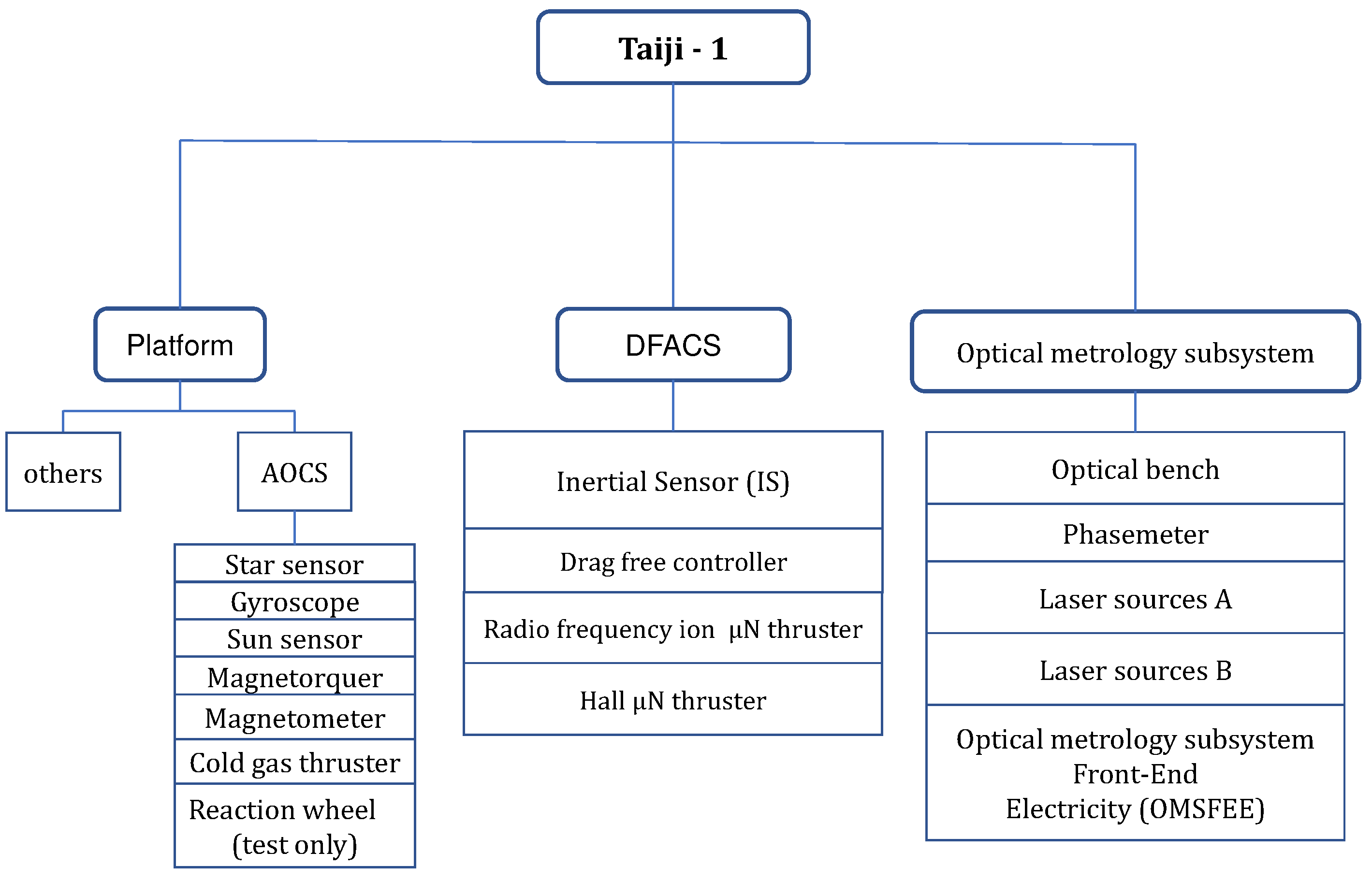
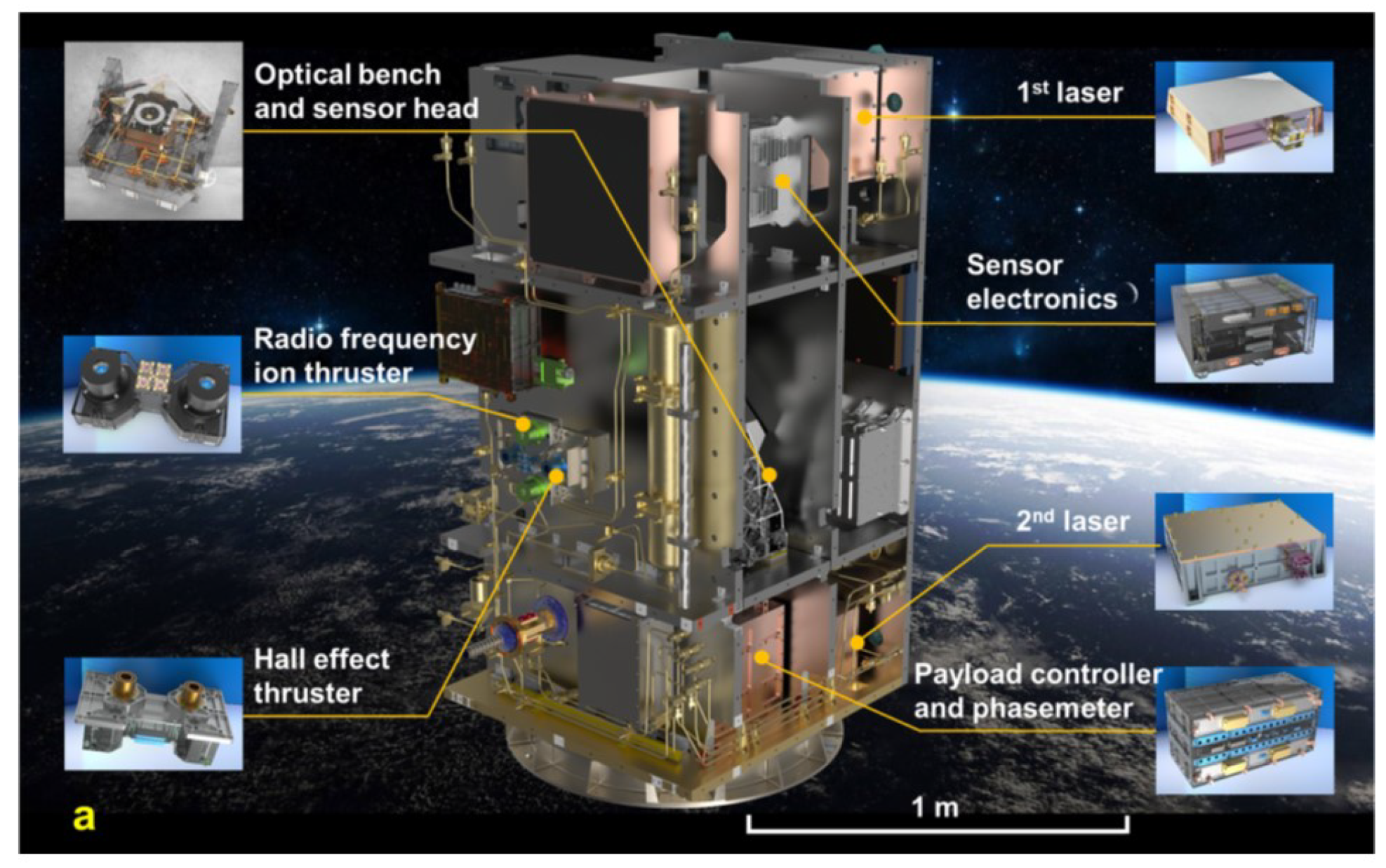
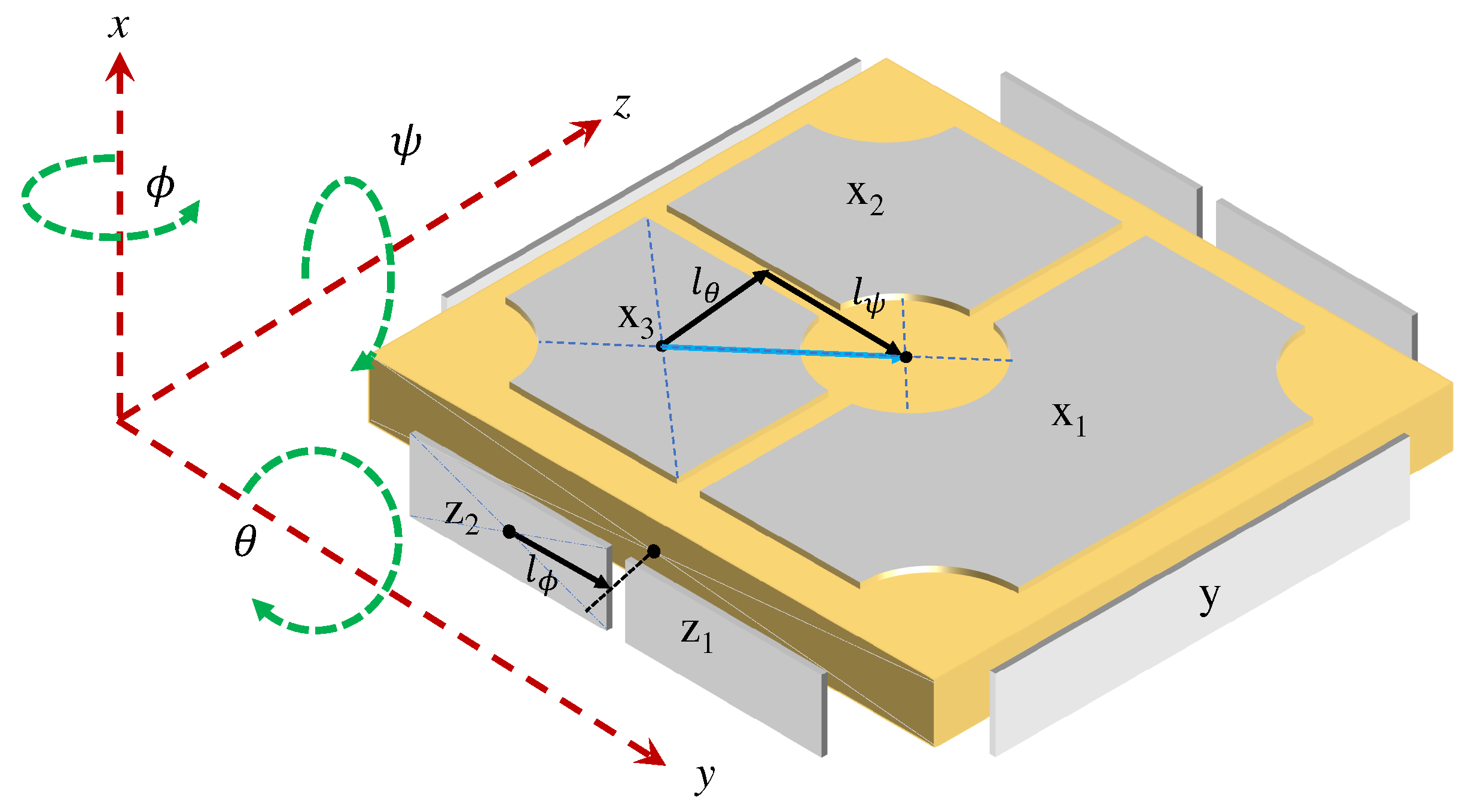
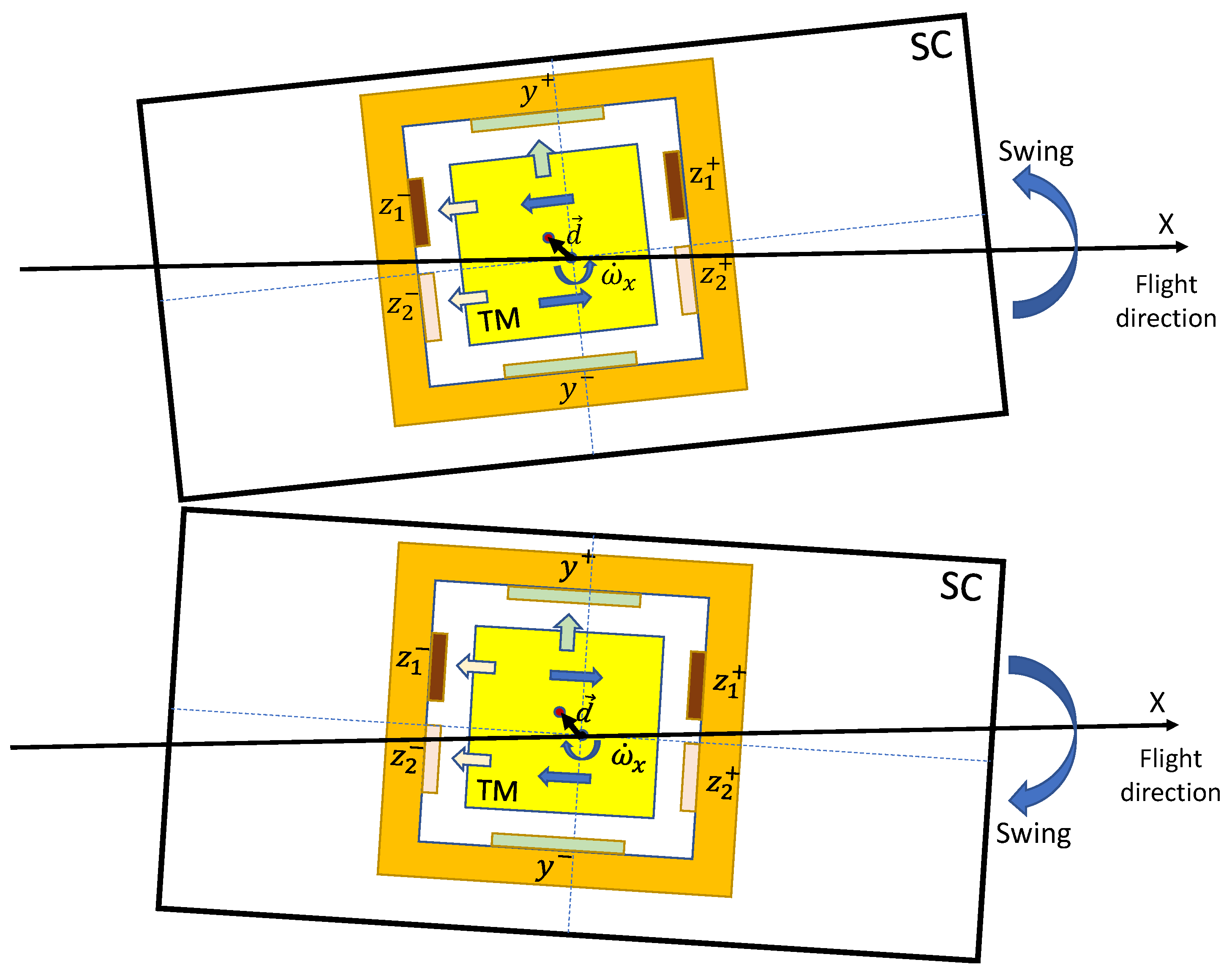
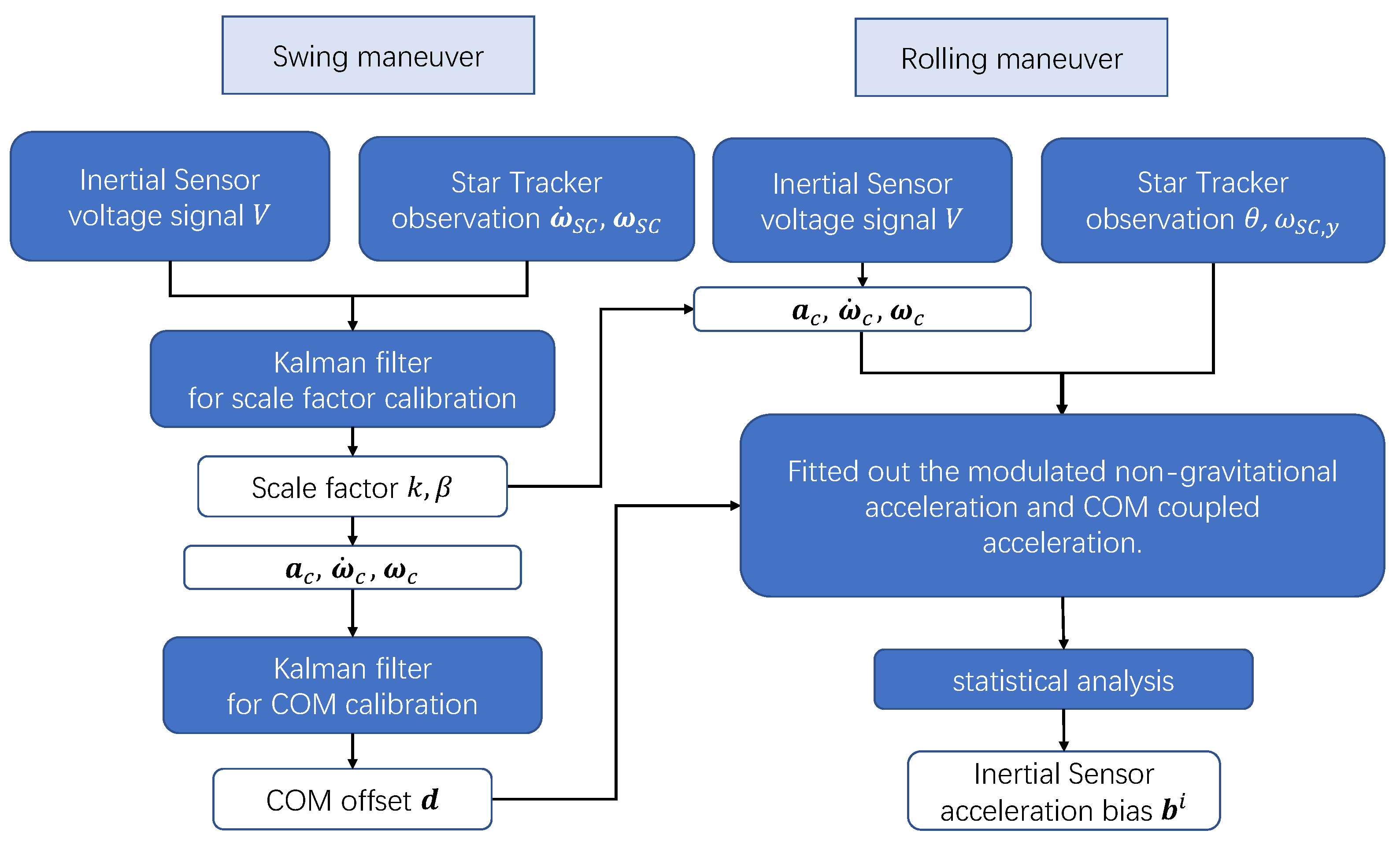
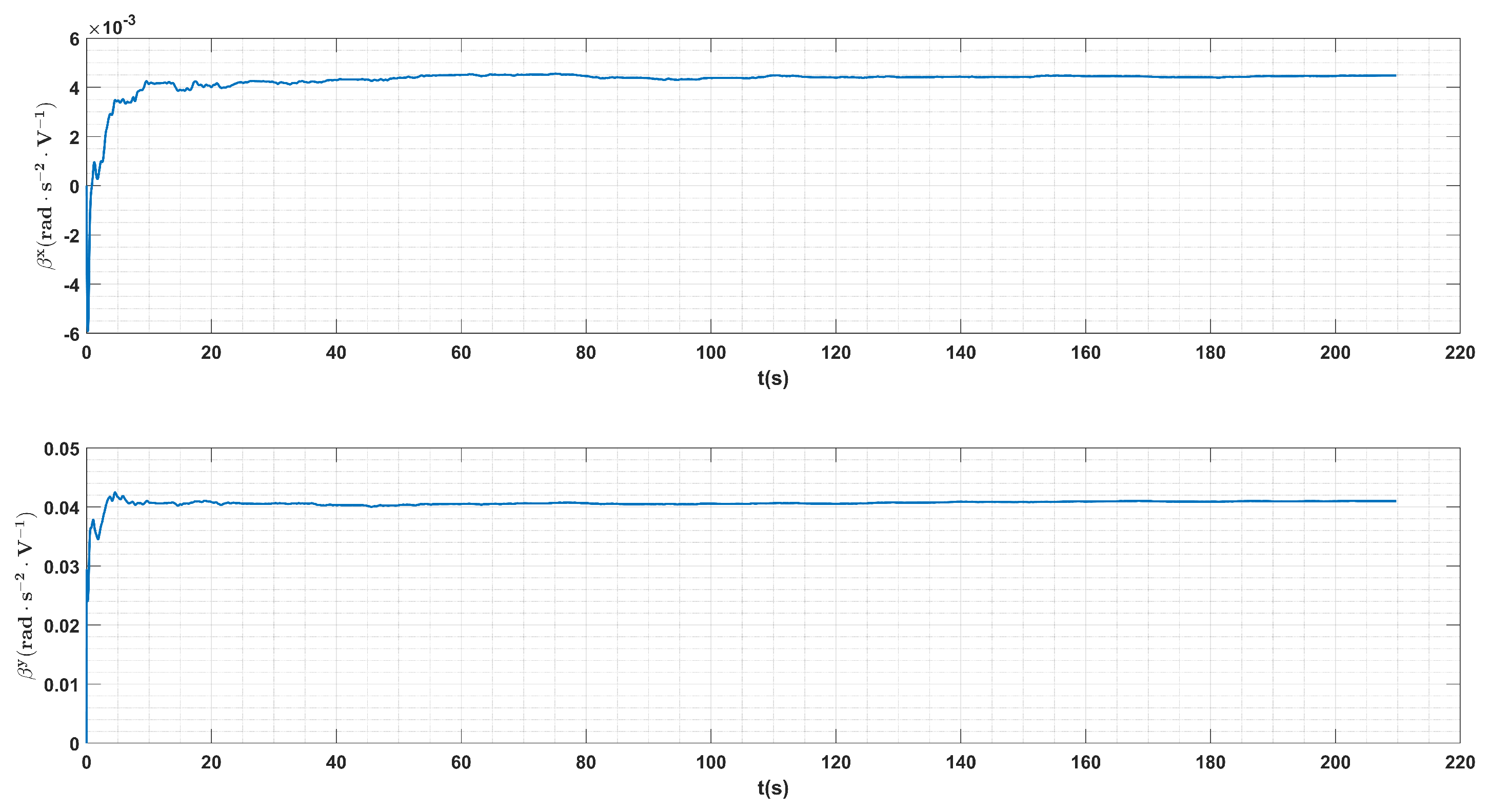
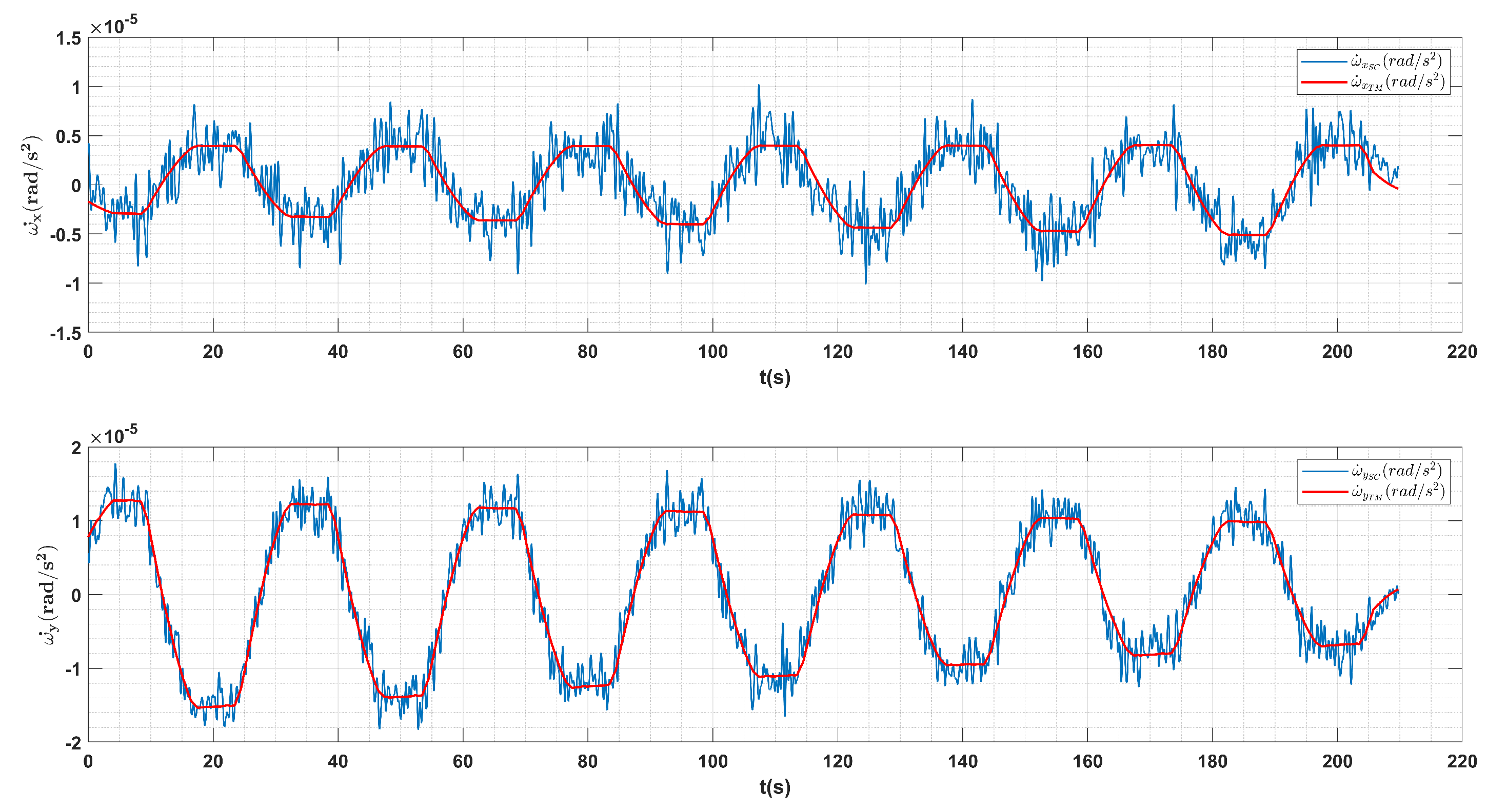
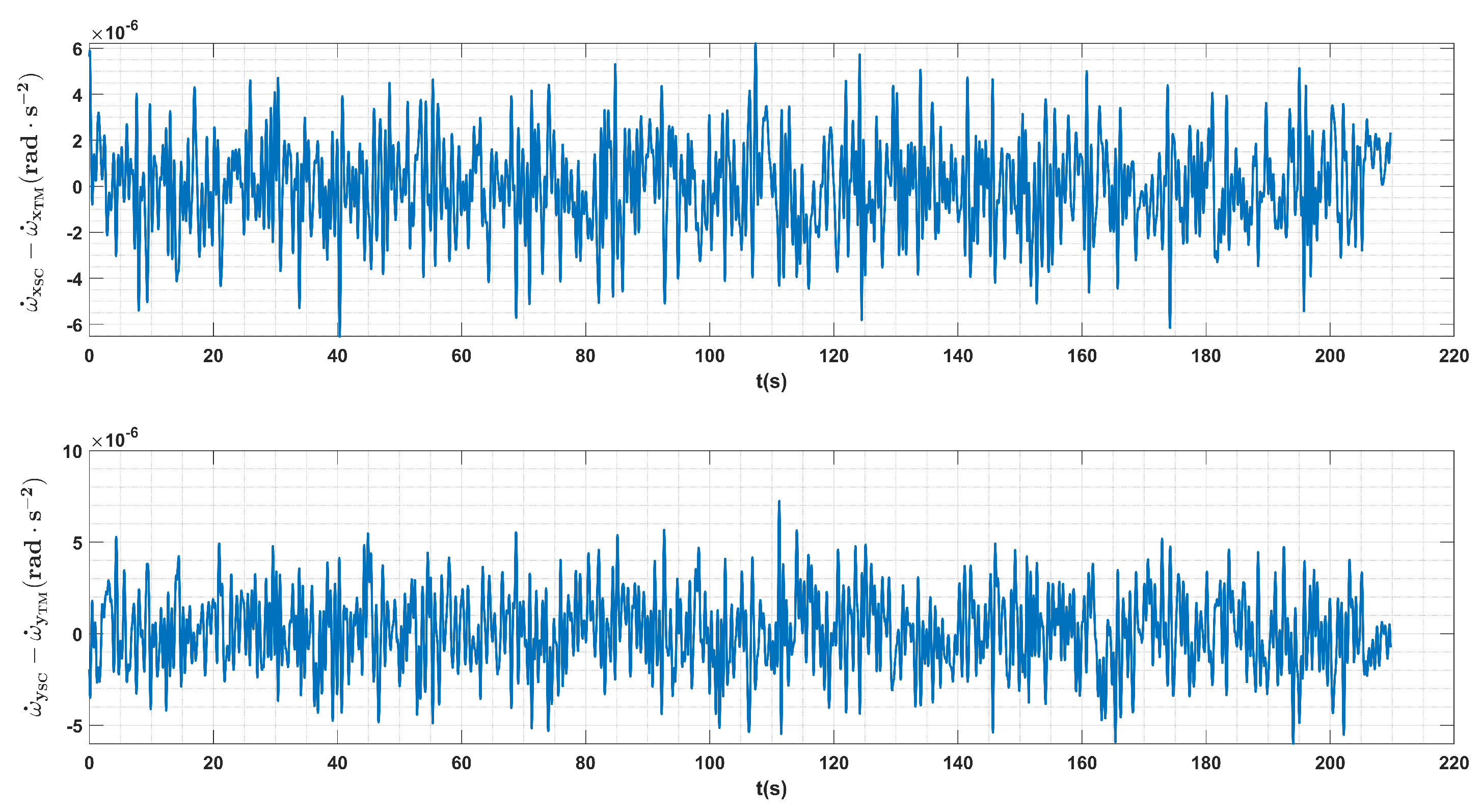
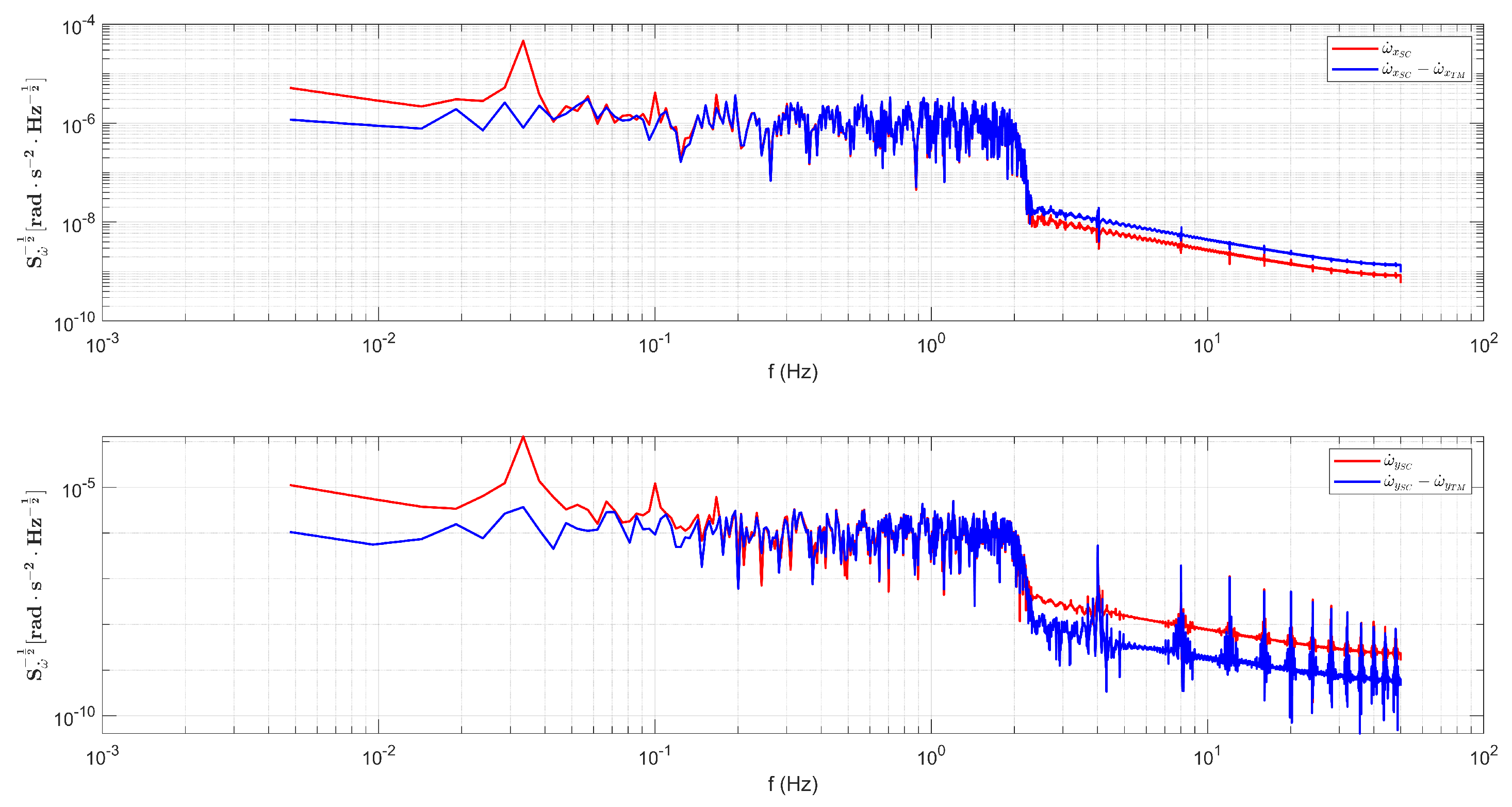
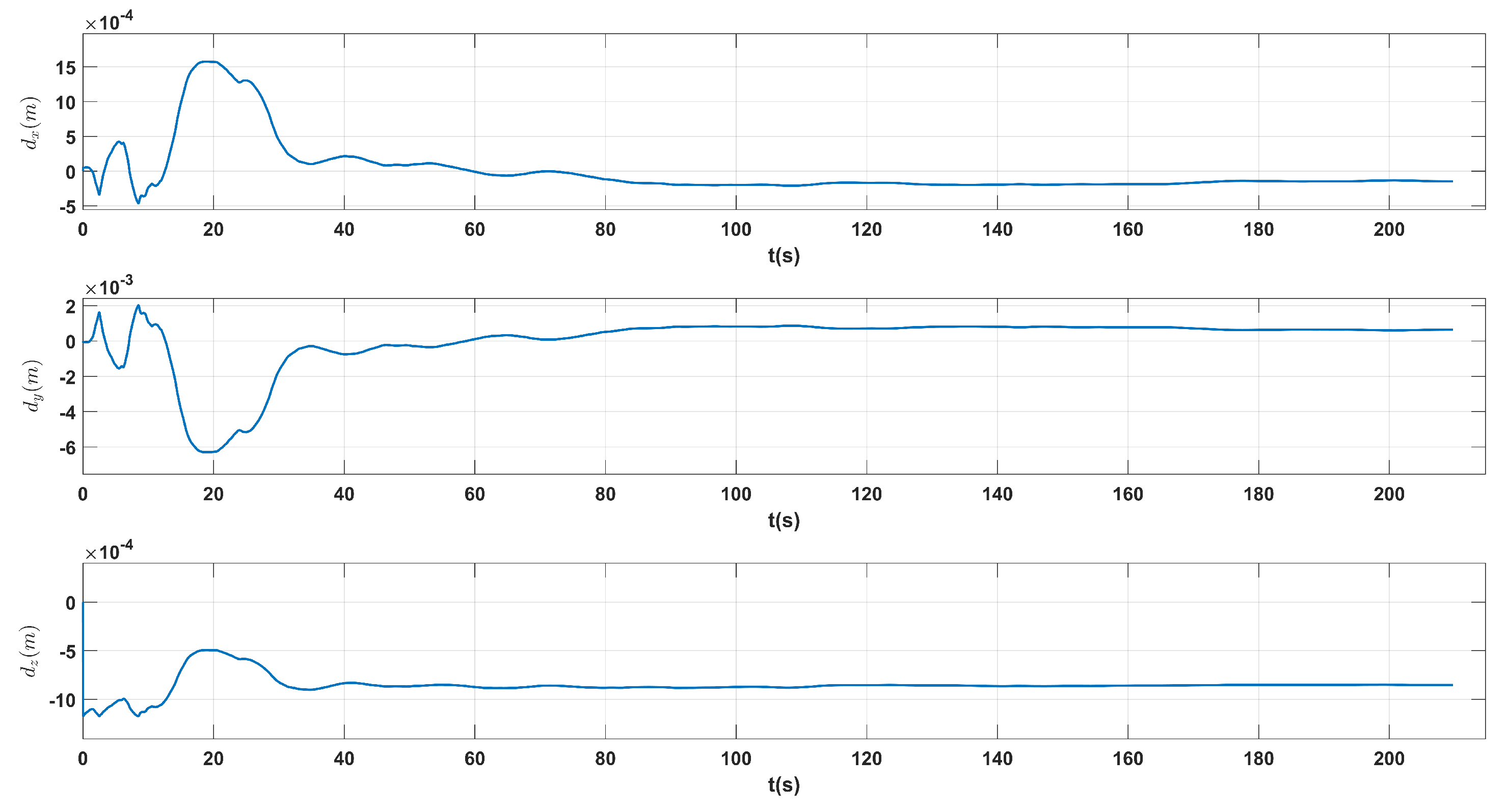
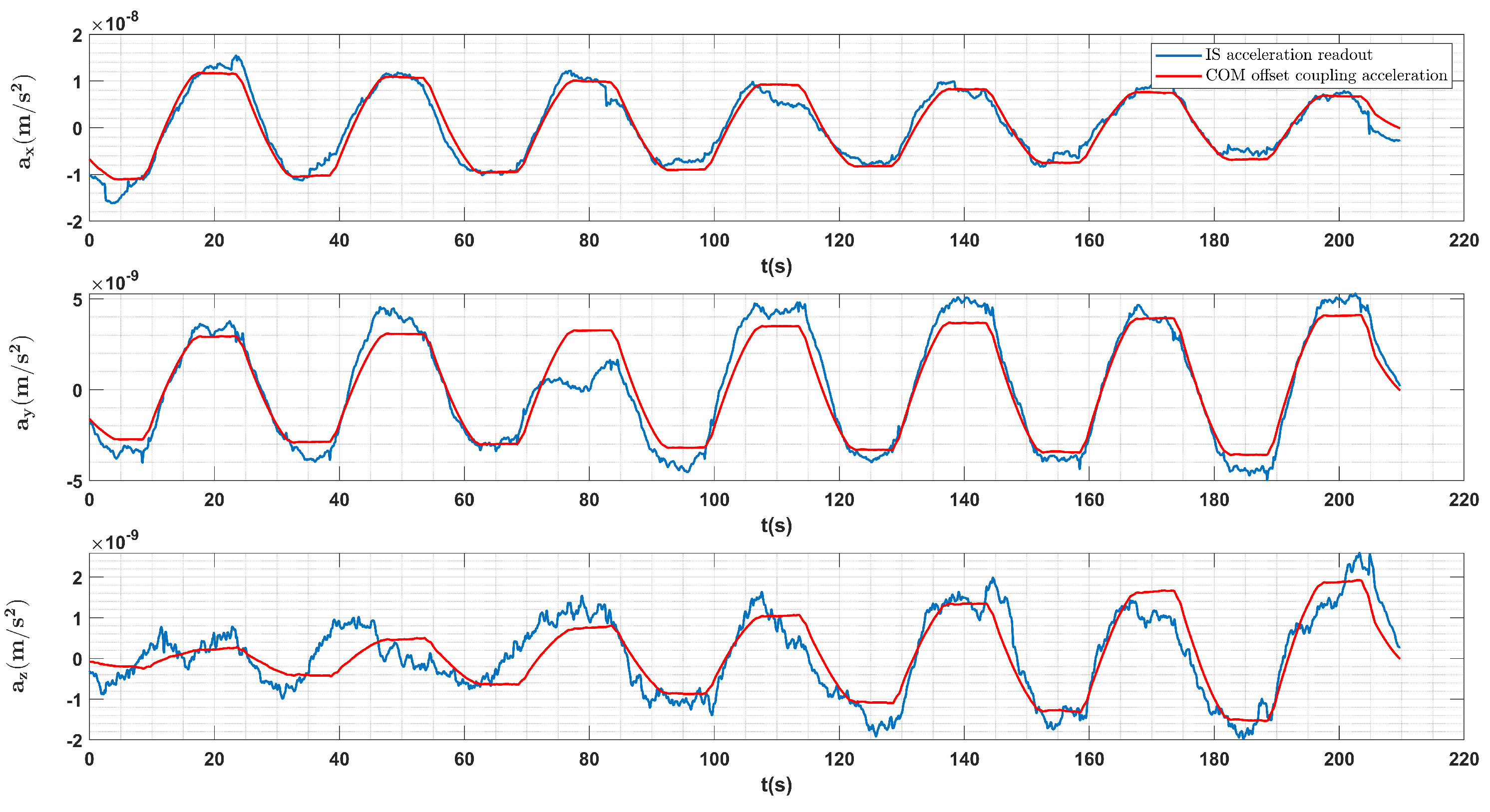
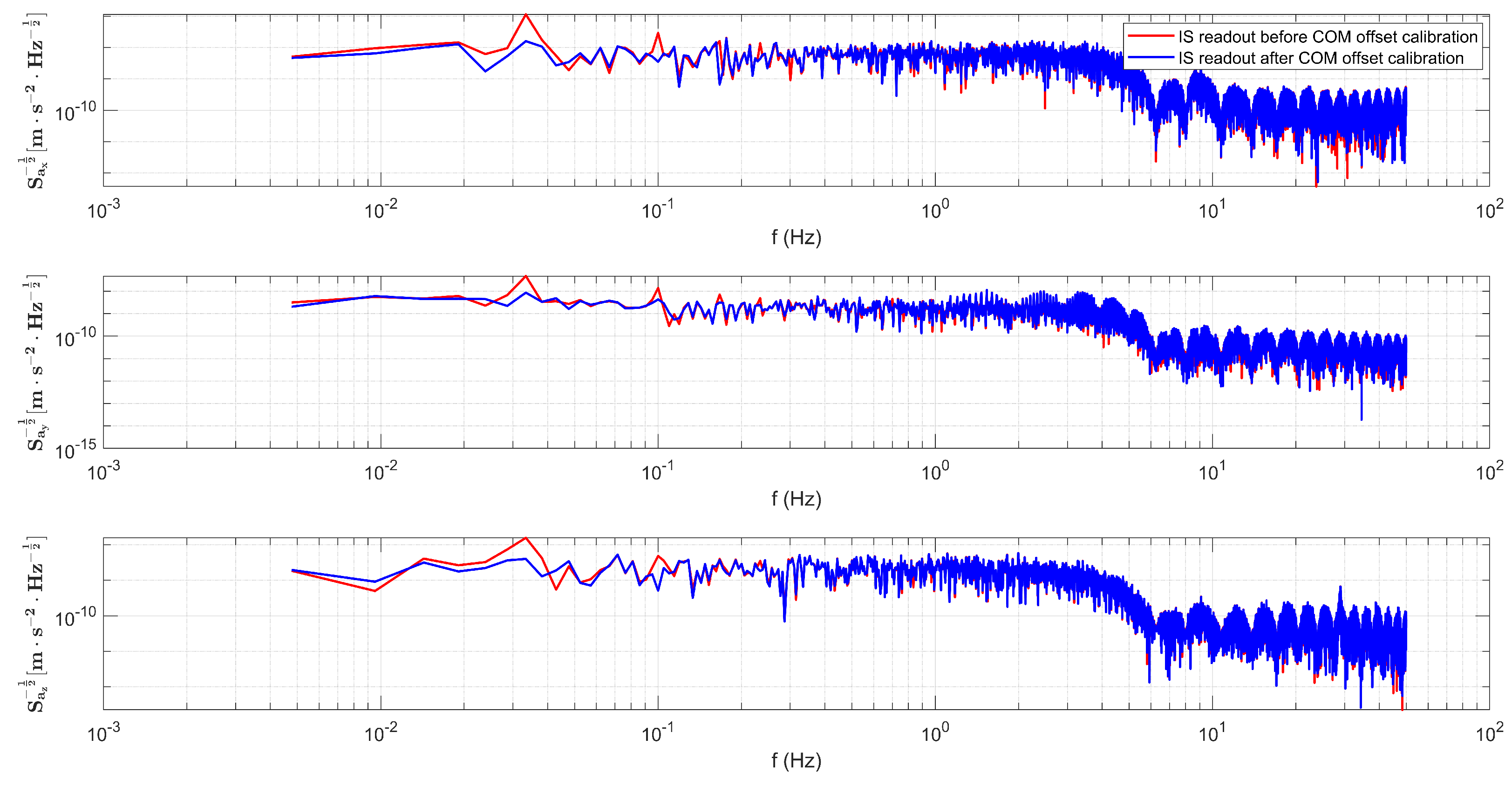
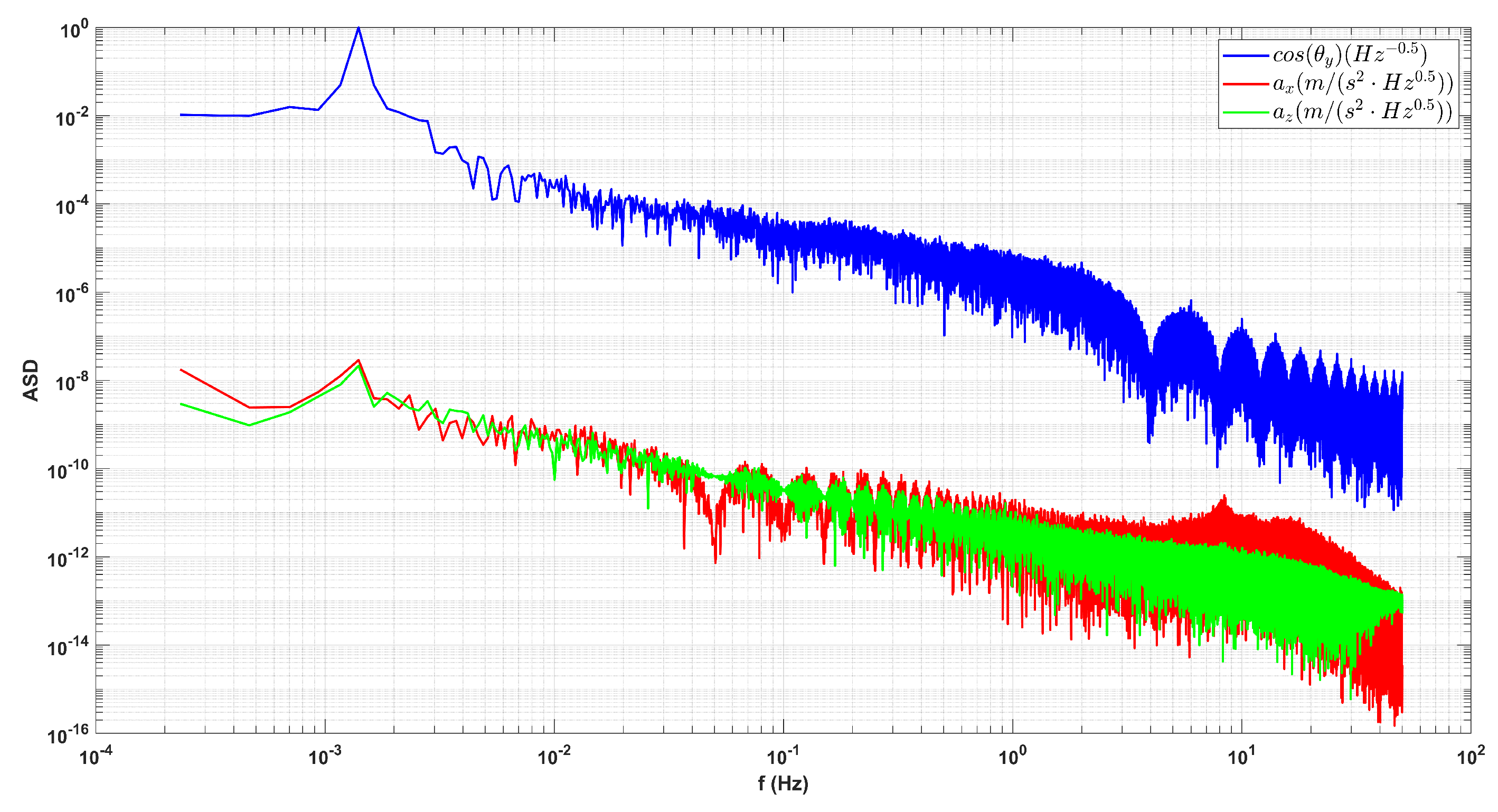
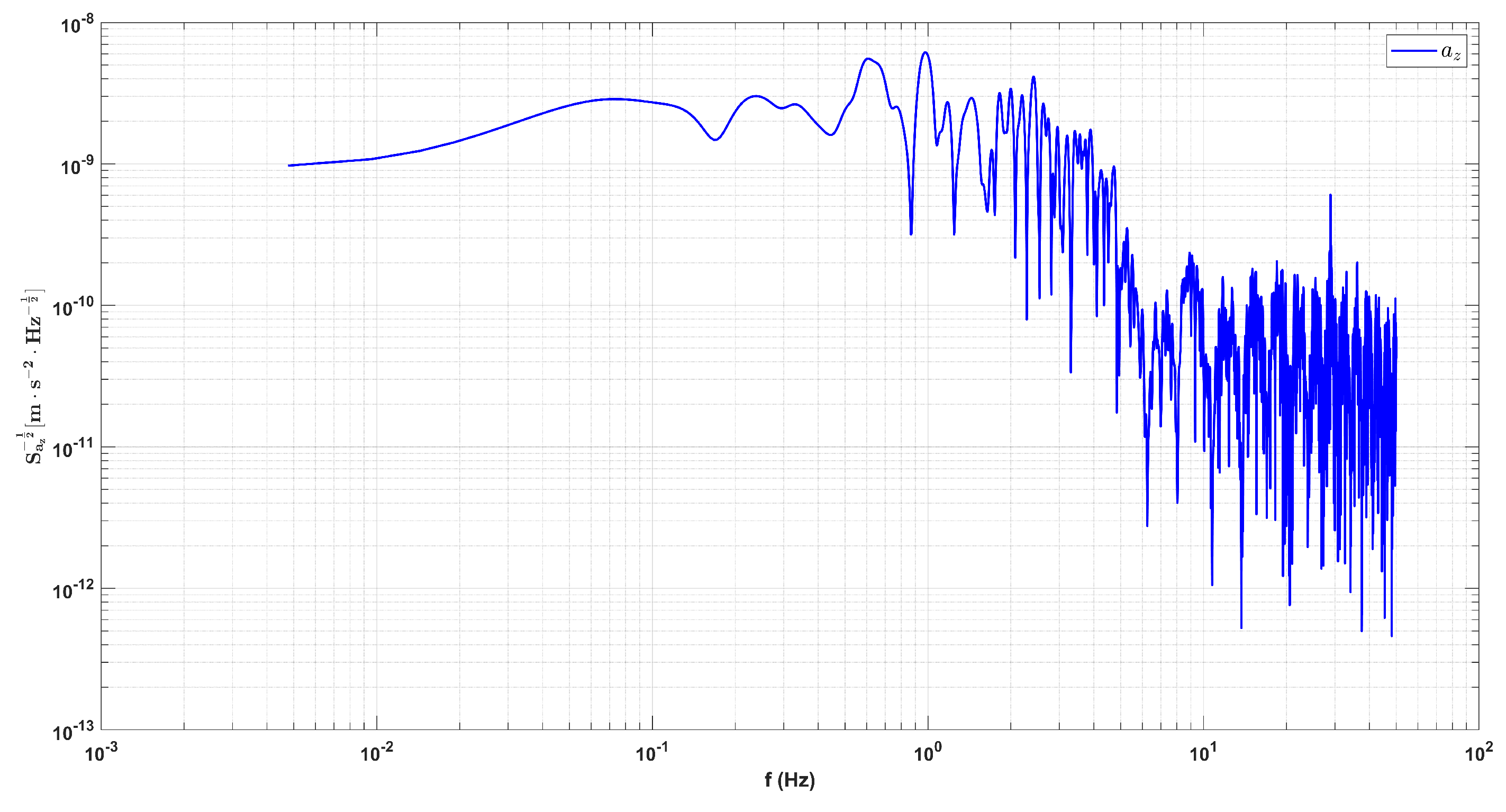
| Parameter | Nominal Value |
| Dynamic range | |
| Bandwidth | |
| Position noise | |
| Actuation noise | |
| Readout noise | |
| Acceleration noise |
| Compensation acceleration readouts | Scale factors and actuation voltages |
| Scale factor | Nominal values | Calibrated values | Calibrated values |
| On-ground | In-orbit | ||
| null | |||
| null | |||
| null | |||
| null |
| COM offset | Calibrated value (µm) | Error (µm) |
| Intrinsic acceleration bias | Calibrated value | Error |
Disclaimer/Publisher’s Note: The statements, opinions and data contained in all publications are solely those of the individual author(s) and contributor(s) and not of MDPI and/or the editor(s). MDPI and/or the editor(s) disclaim responsibility for any injury to people or property resulting from any ideas, methods, instructions or products referred to in the content. |
© 2023 by the authors. Licensee MDPI, Basel, Switzerland. This article is an open access article distributed under the terms and conditions of the Creative Commons Attribution (CC BY) license (http://creativecommons.org/licenses/by/4.0/).





